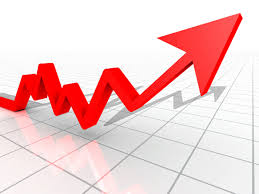June 1 2022, the Bank of Canada raises Key Rate.
Today the Bank of Canada (BoC) decided to raise its key rate by 0.50% to 1.50%, which will cause the Prime Rate at major Financial Institutions (FI’s) to increase the same to 3.70%. Economists are now mentioning the word “stagflation” which we have not heard in Canada since the 1980s. This is surely the biggest concern on central bankers’ minds now. Stagflation is a thin line that central banks will have to walk which will be very treacherous. Stagflation is a condition whereby the economy is experiencing high inflation and high unemployment – raising rates too much will stall the economy and cause recessionary effects while not raising rates will allow inflation to continue. Inflation is the number one enemy of central banks including BoC. Inflation can be very destructive, but recessions can be equally painful, especially if they last longer.
Why is the economy in this precarious position? It was induced artificially with the overreach of government policies. Stagflation should not be normal or even possible for a healthy global competitive market, in short; it’s a surprising condition for us to experience now. Stagflation was a characteristic of a smaller less competitive free market world economy that co-existed with large closed non-free market totalitarian economies decades ago. In 2000, when China opened its doors for business to the world (albeit mainly to supply and not buy), a truly global and competitive economy began.
Pre-pandemic free-market western economies were comparatively robust and healthy. The pandemic caused governments (local & national) to invoke policies that stifled the supply side of our economy, while they propped up the demand side with relief payments. The extent of these policies has created a crippling and rippling effect that has not been easy to pull out of. It has been proven regionally that areas, where they did not impose lockdowns, are doing much better economically now than those that did impose lockdowns. Further, the current US administration’s decision to immediately restrict traditional energy production has caused acute increases in fuel costs that don’t just impact vehicle gas prices but rather the input costs for manufacturing and services throughout the economy.
In summary, we are in a difficult economic time that has largely been induced artificially. With a cooler, more cautious approach by governments and central banks, the economy will right itself. The best approach is to ride the storm out with well-priced adjustable lending products. The worse thing to do right now is to lock into a longer-term fixed product which will cause unneeded immediate pain. What goes up must come down.

